Walled town of Concarneau
You can help expand this article with text translated from the corresponding article in French. (October 2016) Click [show] for important translation instructions.
- View a machine-translated version of the French article.
- Machine translation, like DeepL or Google Translate, is a useful starting point for translations, but translators must revise errors as necessary and confirm that the translation is accurate, rather than simply copy-pasting machine-translated text into the English Wikipedia.
- Do not translate text that appears unreliable or low-quality. If possible, verify the text with references provided in the foreign-language article.
- You must provide copyright attribution in the edit summary accompanying your translation by providing an interlanguage link to the source of your translation. A model attribution edit summary is
Content in this edit is translated from the existing French Wikipedia article at [[:fr:Ville de Concarneau]]; see its history for attribution. - You may also add the template
{{Translated|fr|Ville de Concarneau}}to the talk page. - For more guidance, see Wikipedia:Translation.
Walled town in Concarneau, France
47°52′18″N 3°54′59″W / 47.871674°N 3.916266°W / 47.871674; -3.91626616th century
The Walled town of Concarneau is a walled town built in the 15th and 16th century in Concarneau.[1][2]
History
Description
Museums
- Musée de la pêche de Concarneau [fr] (Museum of Fishing)
Gallery
-
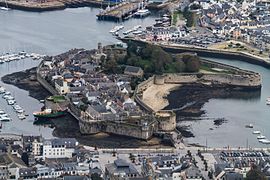 The medieval walled town (overfly).
The medieval walled town (overfly). -
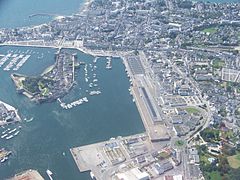 The medieval walled town and Concarneau (overfly).
The medieval walled town and Concarneau (overfly). -
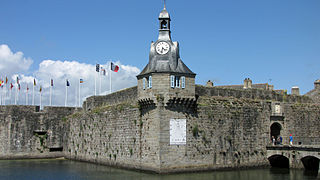 The medieval walled town.
The medieval walled town. -
 The medieval walled town.
The medieval walled town. - Inside the city.
-
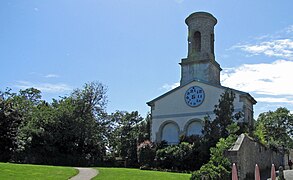 Saint-Guénolé's Church.
Saint-Guénolé's Church. -
 Inside the city.
Inside the city. -
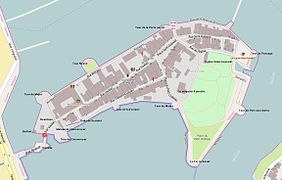 Map of the city.
Map of the city.
References
- ^ Base Mérimée: PA00089889 : Ancienne caserne Hervo, Ministère français de la Culture. (in French)
- ^ Base Mérimée: PA00089895 : Remparts de la Ville Close, Ministère français de la Culture. (in French)
Bibliography
- Jean Moreau (1836). Schwartz & Gagnot (ed.). Histoire de ce qui s'est passé en Bretagne durant les guerres de la Ligue et particulièrement dans le diocèse de Cornouaille (in French). p. 356.
- Christophe-Paulin de La Poix Fréminville (1832). Lefournier et Deperiers (ed.). Antiquités de la Bretagne: Finistère (in French). Vol. 1. p. 326. 25.
- Collectif (1998). Flohic (ed.). Le patrimoine des communes du Finistère (in French). p. 1565. ISBN 2-84234-039-6. Flohic.
- Roger Frey (2013). "Étymologie et histoire de Concarneau" (in French). infobretagne.com. Retrieved 16 November 2014.
- Louis-Pierre Le Maître (2003). Palantines (ed.). Concarneau, histoire d'une ville (in French). p. 221. ISBN 978-2911434259.
- Paul Nédellec (22 November 1936). "Concarneau, ville de joie". La Croix (in French). No. 16495. Retrieved 16 November 2014.
- J. Trévédy (1990) [1908], Res Universis/Le livre d'histoire-Lorisse (ed.), Essai sur l'histoire de Concarneau, Monographies des villes et villages de France (in French), p. 204, ISBN 2-87760-280-X, ISSN 0993-7129

Wikimedia Commons has media related to Ville Close de Concarneau.




















